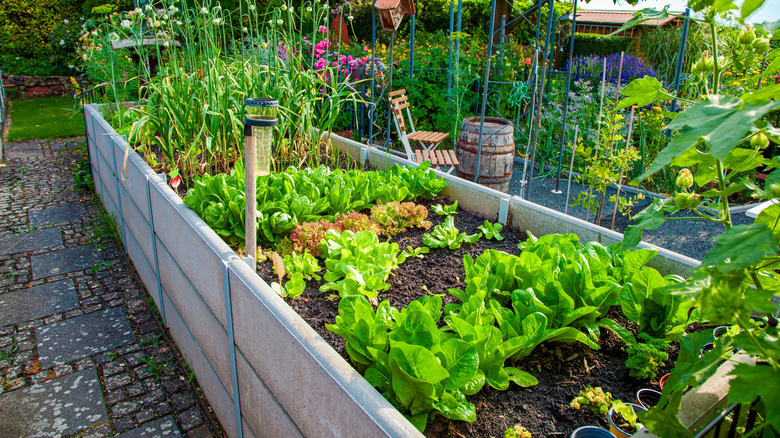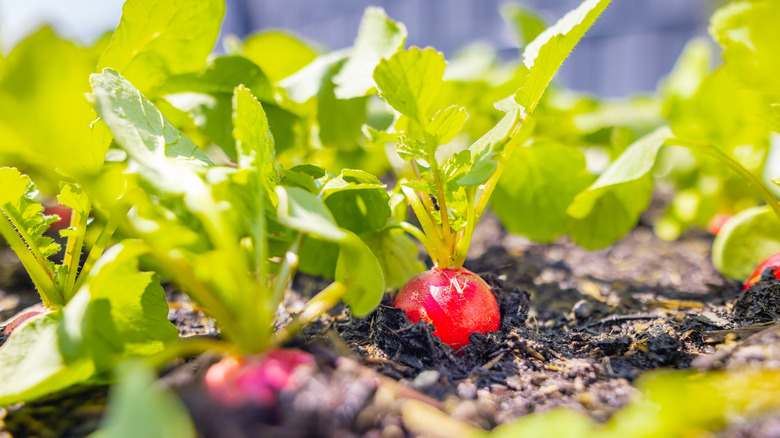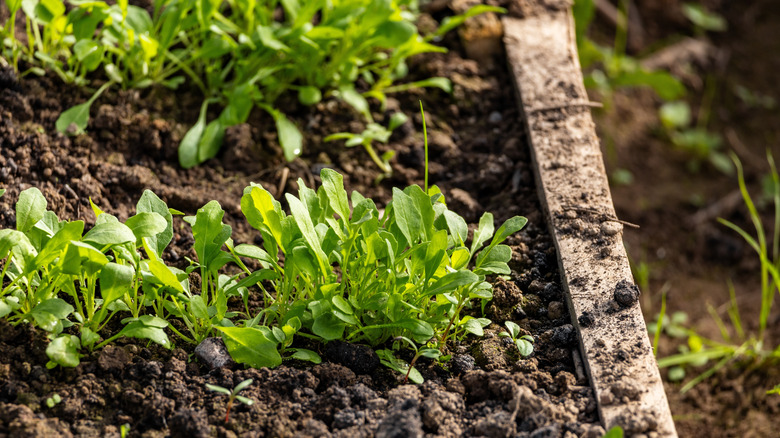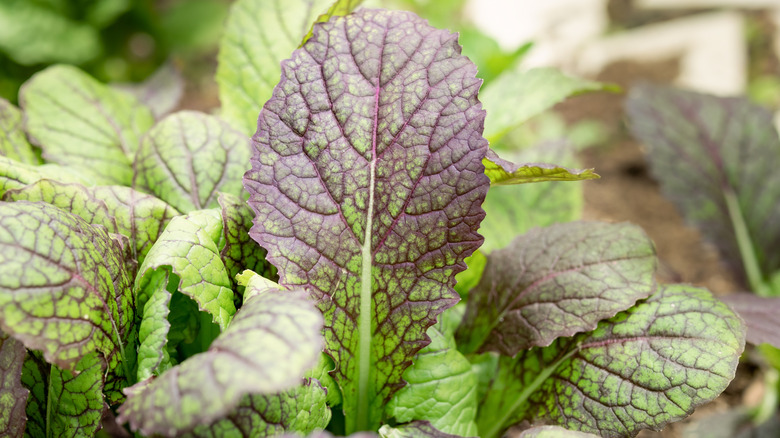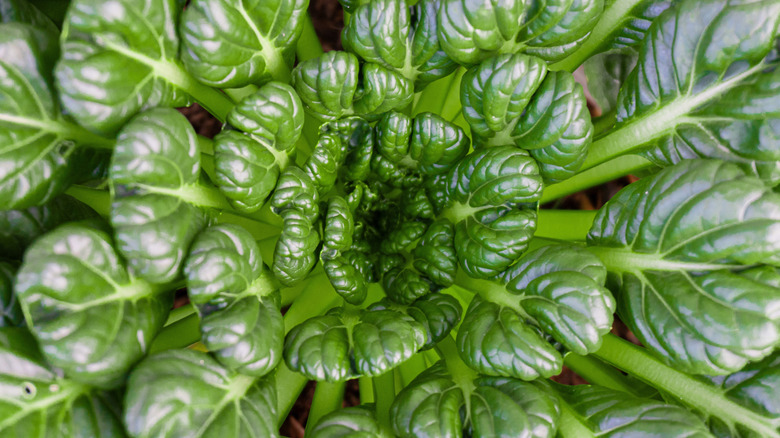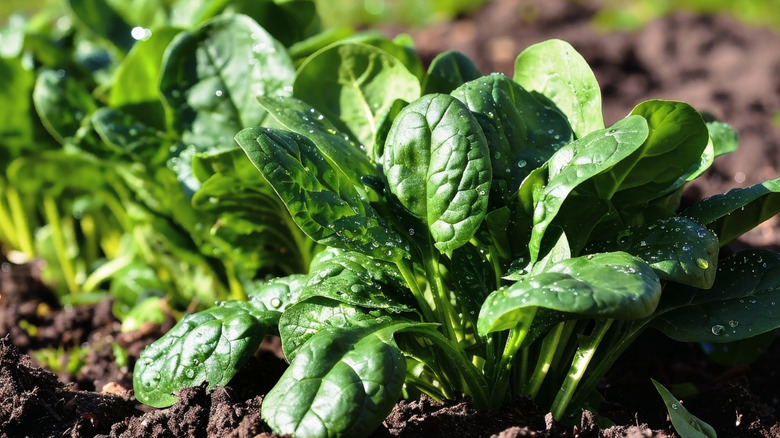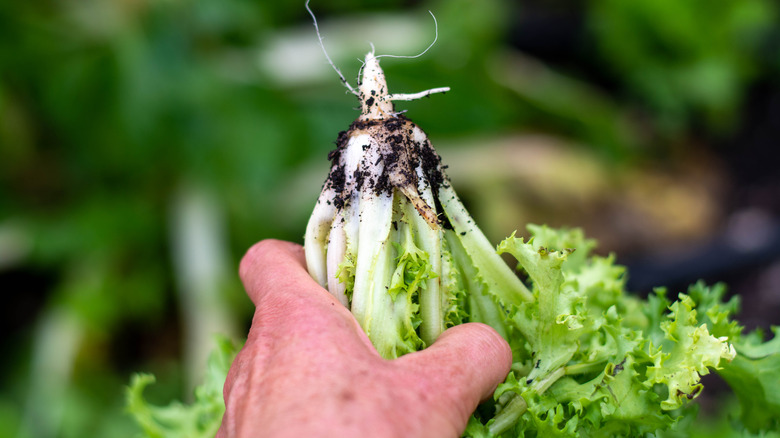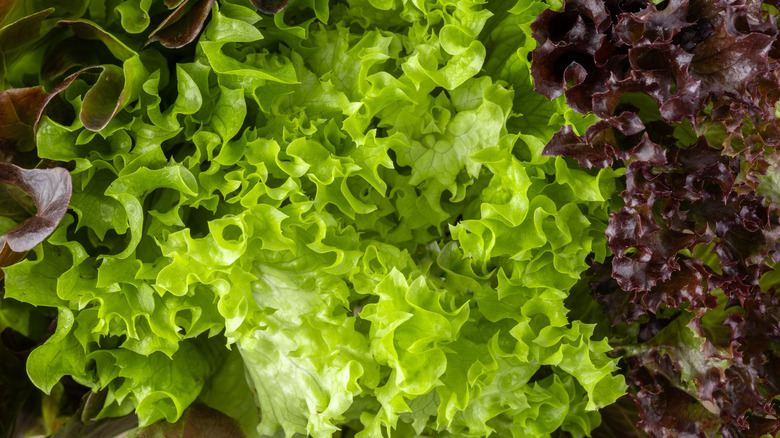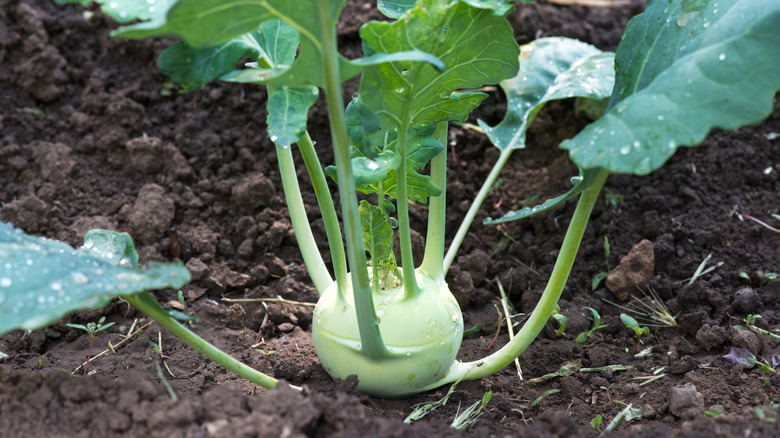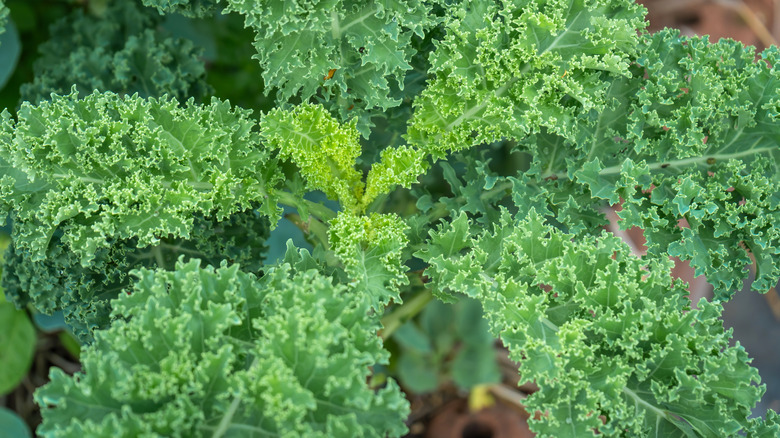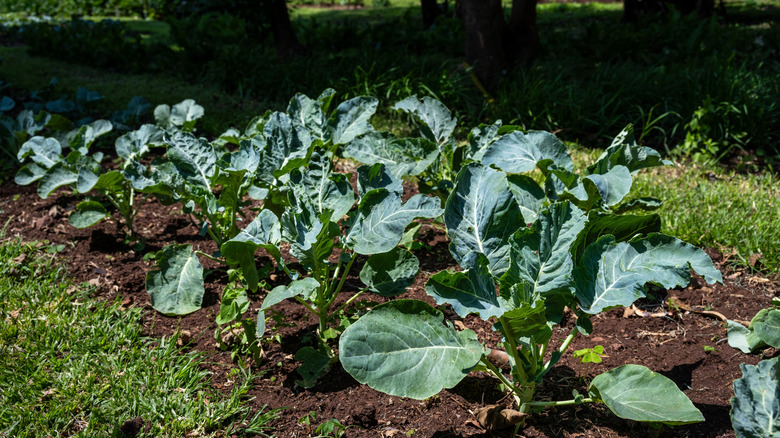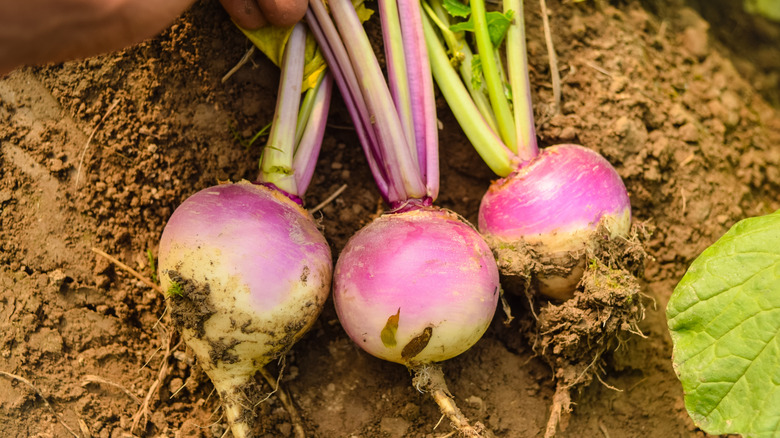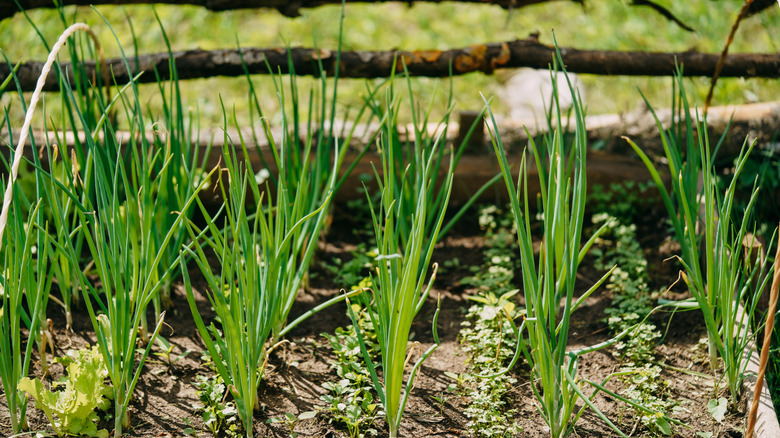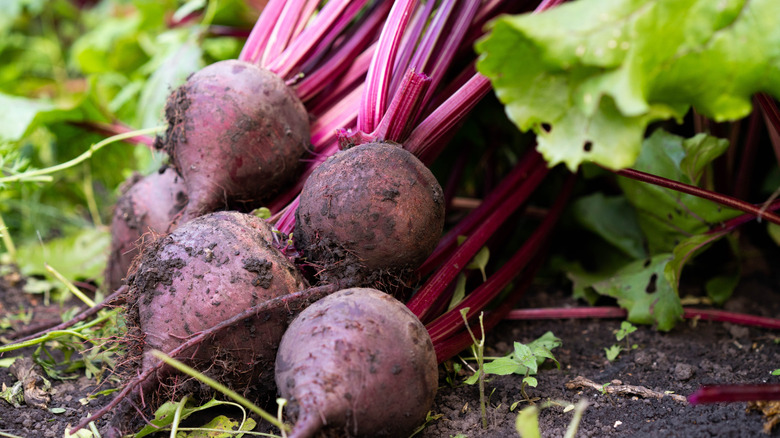15 Vegetables You Can Still Plant In October For A Fall Harvest
Many gardeners think that when October starts, the growing season ends. But that is not true. If you know how to treat your garden in October and choose cool-season vegetables with short maturity times, you can still enjoy a rewarding harvest before the season ends. For instance, fall months, including October, are one of the best times to plant leafy greens. In these months, the low temperatures enhance their quality, making these vegetables productive and preventing them from bolting.
However, before planting your vegetables, you need to decide between seeding and transplanting. This is important as some vegetables, when transplanted, form distorted roots. Whereas for others, such as leafy greens, transplanting is the better option, as you can start them indoors and then transplant them later. Also, with fall gardening, especially in October, work backward from your region's average first frost date to give your vegetables the best chance. Note the days to maturity of the vegetable you want to grow and add an extra 10–14 days to make up for the slower growth that comes with cooler fall weather.
Radish
Radish is a fast-growing root vegetable, taking only 20 to 60 days to reach maturity. You can harvest them as soon as you see the swollen stem emerging from the ground. After that, you can take them out whenever they reach your desired size. For optimal growth, plant your radishes in loose soil. Their roots struggle to grow if the soil is compacted. And, remove stones or large sticks from the soil to give them the space they need. Lastly, give them plenty of water with a consistent schedule, if you want to keep your radishes from cracking.
Arugula
Arugula is a cool-season leafy green that is becoming increasingly popular and is known for its peppery taste. Arugula grows quickly under the right conditions. Baby arugula can be picked in as few as 18 days after planting. Whereas, if you want the mature crop, expect it to be ready within 30 to 50 days. For best results, plant arugula in full sun and nutrient-rich, well-drained loamy soil with a pH between 6 and 7. And even though arugula has few pests, flea beetles can be a problem and can even kill small plants.
Mustard greens
Mustard greens are the kind of plants that just keep giving. It is easy to grow, quite inexpensive, sometimes used in ornamental plantings, and you can harvest the whole plant at once or pick the outer leaves for a continuous "cut-and-come-again" harvest until the season ends. You can harvest them when the leaves attain their full size, which usually takes about 30 to 45 days. As for the soil conditions, they need reasonably fertile, well-drained soil. Also, since they are prone to fungal diseases, avoid overhead watering and ensure good air circulation around the plants.
Tatsoi
Tatsoi is an Asian-style mustard that is extremely cold-tolerant with dark green leaves, tender stems, and a mild, sweet, cabbage-like taste. If you plant it early in October, it should be ready to harvest in around 4 to 6 weeks. You can grow it in a spot that gets at least 6 hours of sun daily, but it will survive in partial shade too. As for the soil, make sure it is rich in organic matter, well-drained, and loose for optimal growth.
Spinach
Popeye got his strength from spinach — and with its high iron content, he might've been onto something. Spinach seeds germinate best when the soil temperature is between 45 and 68 degrees Fahrenheit. This makes October a good time to plant spinach. However, make sure to use fresh seeds for better germination, as older spinach seeds lose their viability very fast. Nevertheless, they should be ready to harvest in about 40 to 60 days when the leaves reach their full size.
Endive
You can think of endive as the slightly elegant and fancier cousin of lettuce, with a mild, sweet, and slightly bitter taste. Endive grows best in sunny, well-drained soil with moderate fertility, cool weather, and consistent moisture. It takes about 50 to 70 days for endive to get ready for harvest, but you can also take it out sooner than that. Endive doesn't usually face many pests or disease problems. However, if growing conditions aren't ideal, fungal, bacterial, or viral diseases can become an issue.
Leaf Lettuce
Lettuce is a cool-season crop that grows quickly under the right conditions and will usually be ready to harvest in about 30 days. However, you can always pick it earlier when the leaves reach your desired size. When growing leaf lettuce, keep the soil consistently moist but not waterlogged. Also, plant it in a location that gets at least 4 to 6 hours of sun on a daily basis. Just make sure to check the label when buying seeds to avoid accidentally purchasing head lettuce seeds because they take longer to mature.
Kohlrabi
Also known as German turnip or turnip cabbage, is a knobby, fast-growing, cool-weather, alien-looking vegetable. If you grow it from seed, you can expect to harvest it in as little as 7 weeks. Since it generally has very few disease and pest issues, you should have no problem growing it in your fall vegetable garden. Just make sure to water it regularly, as it has short roots and will need to be watered at least once a week, at a depth of one to two inches.
Kale
Kale is a true nutritional powerhouse, packed with vitamins, fiber, carotenoids, and manganese. Also, it is quick and easy to grow, so it will be a really good choice for you if you are looking for something to plant in October for a fall harvest. You can collect baby kale leaves in as few as 25 days, while for the mature crop, you will need to wait about 50 to 75 days. For quickest growth, treat the soil with a complete fertilizer and add plenty of organic matter. Also, keep an eye out for aphids, looper worms, and earwigs.
Collard Greens
Collard greens are a member of the cabbage family; however, they do not form a head. Instead, they are mostly grown for their leaves. You can plant them in many types of soil, but they perform best in loamy soils. Also, the soil needs to have a pH of about 6.0 to 6.5 and rich in organic matter. Collard greens survive freezes and frosts better than many other types of leafy greens, which makes them a very practical choice for people living in regions with harsh winters. Avoid overhead watering to decrease and prevent fungal infections.
Turnip
Turnips are easy to grow, and they mature in about two months. During the fall, they are sometimes also planted for their greens. Like most vegetables, turnips need at least 8 hours of sunlight, regular watering, and rich, well-drained soil that has been deeply tilled. Also, with turnips, weeds are rarely an issue as they germinate and grow very quickly. However, when planting turnips, do not apply excess nitrogen to the soil as this can reduce the yield. And if you previously grew rutabagas, radishes, and turnips in the same spot, be on the lookout for root maggots.
Scallion
Scallions, also known as bunching onions or green onions, grow as green and white stalks without forming true bulbs. You can harvest them in about 65 days after planting. It's important to note that scallions are not the same as the leafy tops of bulbing onions. They're a different species that do not form bulbs. They need fertile and well-drained soils for optimal growth. And since onions have shallow roots, make sure you water them enough. You can also place a layer of mulch to help retain moisture in the soil.
Beets
Beets are often overlooked and underappreciated, but they are very nutritious vegetables that are easy to grow, and you can harvest them in as few as 45 to 65 days after sowing. For best results, plant beets in deep, loose soil. Also, clear the soil of any stones or clumps before planting, as they can cause the beet roots to get misshapen. To plant beets, make rows 12 to 15 inches apart and place the seeds about an inch apart in each row. Gently cover them with a half-inch layer of soil.
